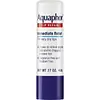What's inside
What's inside
 Key Ingredients
Key Ingredients

 Benefits
Benefits

 Concerns
Concerns

 Ingredients Side-by-side
Ingredients Side-by-side

Octyldodecanol
EmollientRicinus Communis Seed Oil
MaskingBeeswax
Emulsion StabilisingBis-Diglyceryl Polyacyladipate-2
EmollientButyrospermum Parkii Butter
Skin ConditioningHelianthus Annuus Seed Wax
Skin ConditioningHydrogenated Castor Oil
EmollientPanthenol
Skin ConditioningDimethicone
EmollientWater
Skin ConditioningTocopheryl Acetate
AntioxidantSimmondsia Chinensis Seed Oil
EmollientTocopherol
AntioxidantAscorbyl Palmitate
AntioxidantButyl Methoxydibenzoylmethane 3%
UV AbsorberDimethicone 2%
EmollientHomosalate 15%
Skin ConditioningEthylhexyl Salicylate 5%
UV AbsorberBis-Diglyceryl Polyacyladipate-2
EmollientBis-Stearyl Dimethicone
EmollientButyloctyl Salicylate
Skin ConditioningC12-15 Alkyl Benzoate
AntimicrobialCalendula Officinalis Extract
Skin ConditioningCaprylic/Capric Triglyceride
MaskingCarthamus Tinctorius Seed Oil
MaskingCetyl Dimethicone
EmollientCitric Acid
BufferingEuphorbia Cerifera Wax
Aroma
Microcrystalline Wax
Emulsion StabilisingMyristyl Myristate
EmollientOctyldodecanol
EmollientOryzanol
Skin ConditioningOzokerite
Emulsion StabilisingPanthenol
Skin ConditioningPhenoxyethanol
PreservativeSorbic Acid
PreservativeStearyl Behenate
EmollientSucralose
Skin ConditioningTetrahexyldecyl Ascorbate
AntioxidantTocopheryl Acetate
AntioxidantTriticum Vulgare Germ Oil
EmollientButyl Methoxydibenzoylmethane 3%, Dimethicone 2%, Homosalate 15%, Ethylhexyl Salicylate 5%, Bis-Diglyceryl Polyacyladipate-2, Bis-Stearyl Dimethicone, Butyloctyl Salicylate, C12-15 Alkyl Benzoate, Calendula Officinalis Extract, Caprylic/Capric Triglyceride, Carthamus Tinctorius Seed Oil, Cetyl Dimethicone, Citric Acid, Euphorbia Cerifera Wax, Aroma, Microcrystalline Wax, Myristyl Myristate, Octyldodecanol, Oryzanol, Ozokerite, Panthenol, Phenoxyethanol, Sorbic Acid, Stearyl Behenate, Sucralose, Tetrahexyldecyl Ascorbate, Tocopheryl Acetate, Triticum Vulgare Germ Oil
 Reviews
Reviews

Ingredients Explained
These ingredients are found in both products.
Ingredients higher up in an ingredient list are typically present in a larger amount.
This ingredient is lipid-based synthetic skin-conditioning agent derived from adipic acid and a mixture of fatty acids. It is often called a lanolin substitute.
As an emollient, it helps soften and hydrate the skin. Emollients create a barrier on the skin to trap moisture in.
Due to its fatty acid base, it may not be Malassezia folliculitis safe.
Learn more about Bis-Diglyceryl Polyacyladipate-2Dimethicone is a type of synthetic silicone created from natural materials such as quartz.
What it does:
Dimethicone comes in different viscosities:
Depending on the viscosity, dimethicone has different properties.
Ingredients lists don't always show which type is used, so we recommend reaching out to the brand if you have questions about the viscosity.
This ingredient is unlikely to cause irritation because it does not get absorbed into skin. However, people with silicone allergies should be careful about using this ingredient.
Note: Dimethicone may contribute to pilling. This is because it is not oil or water soluble, so pilling may occur when layered with products. When mixed with heavy oils in a formula, the outcome is also quite greasy.
Learn more about DimethiconeOctyldodecanol is a fatty alcohol. It is primarily used to enhance the texture of products.
As an emulsifier, Octyldodecanol helps prevent the oils and waters from separating. It also prevents ingredients from creating foam when shaken.
Octyldodecanol is created by reducing fatty acid to an alcohol.
Due to its high molecular weight, it does not get absorbed into the skin.
Learn more about OctyldodecanolPanthenol is a common ingredient that helps hydrate and soothe the skin. It is found naturally in our skin and hair.
There are two forms of panthenol: D and L.
D-panthenol is also known as dexpanthenol. Most cosmetics use dexpanthenol or a mixture of D and L-panthenol.
Panthenol is famous due to its ability to go deeper into the skin's layers. Using this ingredient has numerous pros (and no cons):
Like hyaluronic acid, panthenol is a humectant. Humectants are able to bind and hold large amounts of water to keep skin hydrated.
This ingredient works well for wound healing. It works by increasing tissue in the wound and helps close open wounds.
Once oxidized, panthenol converts to pantothenic acid. Panthothenic acid is found in all living cells.
This ingredient is also referred to as pro-vitamin B5.
Learn more about PanthenolTocopheryl Acetate is AKA Vitamin E. It is an antioxidant and protects your skin from free radicals. Free radicals damage the skin by breaking down collagen.
One study found using Tocopheryl Acetate with Vitamin C decreased the number of sunburned cells.
Tocopheryl Acetate is commonly found in both skincare and dietary supplements.
Learn more about Tocopheryl Acetate